UV Fused Silica Bi-Concave Lenses, Uncoated
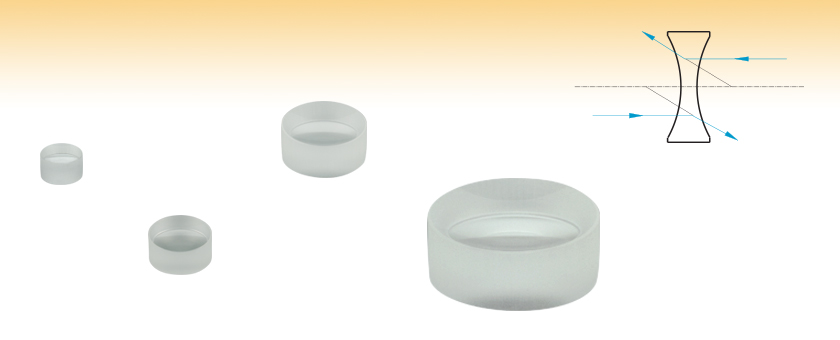
- Supported by the Zemax Optical Design Package
- Spectral Operating Range: 185 nm - 2.1 µm
- Negative Focal Length
LD4148
Ø6 mm
LD4014
Ø9 mm
LD4771
Ø1/2"
LD4931
Ø1"

Please Wait
| Common Specifications | |
|---|---|
| Lens Shape | Convex/Convex |
| Substrate Material | UV Grade Fused Silicaa |
| Wavelength Rangeb | 185 nm - 2.1 μm |
| Diameters Available | 6 mm, 9 mm, 1/2", or 1" |
| Diameter Tolerance | +0.00 mm / -0.10 mm |
| Thickness Tolerance | ±0.1 mm |
| Design Wavelength | 587.6 nm |
| Index of Refraction (@ Design λ) | 1.460 |
| Surface Quality | 40-20 (Scratch-Dig) |
| Spherical Surface Power | 3 Fringes |
| Spherical Surface Irregularity (Peak to Valley) |
λ/4 |
| Centration | ≤3 arcmin |
| Clear Aperture | >90% of Diameter |
| Focal Length Tolerance | ±1% |
| Click on the red Document icon next to the item numbers below to access the Zemax file download. Our entire Zemax Catalog is also available. |
Features
- 4 Different Diameters Available: 6 mm, 9 mm, 1/2", or 1"
- Wavelength Range: 185 nm - 2.1 μm (uncoated)
- Focal Lengths Available from -6.0 to -100.0 mm
- Fabricated from UV Grade Fused Silica
Thorlabs' UV Grade Fused Silica Bi-Concave Lenses are available either uncoated or with a UV antireflection coating for the 245 - 400 nm range deposited on both surfaces. UV-grade fused silica offers high transmission in the deep UV and exhibits virtually no laser-induced fluorescence (as measured at 193 nm), making it an ideal choice for applications from the UV to the near IR. In addition, UV fused silica has better homogeneity and a lower coefficient of thermal expansion than N-BK7.
Bi-concave lenses have negative focal lengths, making them useful for a wide range of applications. They are often used to increase the divergence of a converging beam. In optical systems, it is common for researchers to choose their optics carefully so that the aberrations introduced by the positive- and negative-focal-length lenses approximately cancel. Others use these lenses in pairs to increase the effective focal length of a converging lens.
When deciding between a plano-concave lens and a bi-concave lens, both of which cause the incident light to diverge, it is usually preferable to choose a bi-concave lens if the absolute conjugate ratio (object distance divided by image distance) is close to 1. When the desired absolute magnification is either less than 0.2 or greater than 5, the tendency is to choose a plano-concave lens instead.
Thorlabs offers bi-concave lenses in sizes ranging from Ø6 mm to Ø1". Each size is compatible with a multitude of Thorlabs lens mounts. Please see the Mounting Options tab for details.
| Quick Links to Other Spherical Singlets | ||||||
|---|---|---|---|---|---|---|
| Plano-Convex | Bi-Convex | Best Form | Plano-Concave | Bi-Concave | Positive Meniscus | Negative Meniscus |
Below is the transmission curve for a 10 mm thick uncoated sample of UV fused silica when the incident light is normal to the surface. Please note that this is the measured transmission, including surface reflections.
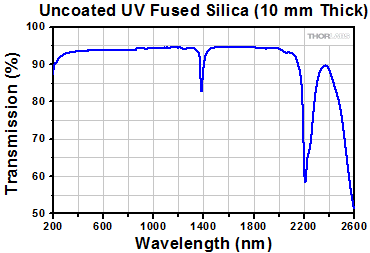 Click to Enlarge
Click to Enlarge
Click Here for Raw Data
| Recommended Mounting Options for Thorlabs Lenses | ||
|---|---|---|
| Item # | Mounts for Ø2 mm to Ø10 mm Optics | |
| Imperial | Metric | |
| (Various) | Fixed Lens Mounts and Mini-Series Fixed Lens Mounts for Small Optics, Ø5 mm to Ø10 mm | |
| (Various) | Small Optic Adapters for Use with Standard Fixed Lens Mounts, Ø2 mm to Ø10 mm | |
| Item # | Mounts for Ø1/2" (Ø12.7 mm) Optics | |
| Imperial | Metric | |
| LMR05 | LMR05/M | Fixed Lens Mount for Ø1/2" Optics |
| MLH05 | MLH05/M | Mini-Series Fixed Lens Mount for Ø1/2" Optics |
| LM05XY | LM05XY/M | Translating Lens Mount for Ø1/2" Optics |
| SCP05 | 16 mm Cage System, XY Translation Mount for Ø1/2" Optics | |
| (Various) | Ø1/2" Lens Tubes, Optional SM05RRC Retaining Ring for High-Curvature Lenses (See Below) |
|
| Item # | Mounts for Ø1" (Ø25.4 mm) Optics | |
| Imperial | Metric | |
| LMR1 | LMR1/M | Fixed Lens Mount for Ø1" Optics |
| LM1XY | LM1XY/M | Translating Lens Mount for Ø1" Optics |
| ST1XY-S | ST1XY-S/M | Translating Lens Mount with Micrometer Drives (Other Drives Available) |
| CXY1A | 30 mm Cage System, XY Translation Mount for Ø1" Optics | |
| (Various) | Ø1" Lens Tubes, Optional SM1RRC Retaining Ring for High-Curvature Lenses (See Below) |
|
| Item # | Mount for Ø1.5" Optics | |
| Imperial | Metric | |
| LMR1.5 | LMR1.5/M | Fixed Lens Mount for Ø1.5" Optics |
| (Various) | Ø1.5" Lens Tubes, Optional SM1.5RR Retaining Ring for Ø1.5" Lens Tubes and Mounts |
|
| Item # | Mounts for Ø2" (Ø50.8 mm) Optics | |
| Imperial | Metric | |
| LMR2 | LMR2/M | Fixed Lens Mount for Ø2" Optics |
| LM2XY | LM2XY/M | Translating Lens Mount for Ø2" Optics |
| CXY2 | 60 mm Cage System, XY Translation Mount for Ø2" Optics |
|
| (Various) | Ø2" Lens Tubes, Optional SM2RRC Retaining Ring for High-Curvature Lenses (See Below) |
|
| Item # | Adjustable Optic Mounts | |
| Imperial | Metric | |
| LH1 | LH1/M | Adjustable Mount for Ø0.28" (Ø7.1 mm) to Ø1.80" (Ø45.7 mm) Optics |
| LH2 | LH2/M | Adjustable Mount for Ø0.77" (Ø19.6 mm) to Ø2.28" (Ø57.9 mm) Optics |
| VG100 | VG100/M | Adjustable Clamp for Ø0.5" (Ø13 mm) to Ø3.5" (Ø89 mm) Optics |
| SCL03 | SCL03/M | Self-Centering Mount for Ø0.15" (Ø3.8 mm) to Ø1.77" (Ø45.0 mm) Optics |
| SCL04 | SCL04/M | Self-Centering Mount for Ø0.15" (Ø3.8 mm) to Ø3.00" (Ø76.2 mm) Optics |
| LH160C | LH160C/M | Adjustable Mount for 60 mm Cage Systems, Ø0.50" (Ø13 mm) to Ø2.00" (Ø50.8 mm) Optics |
| SCL60CA | SCL60C/M | Self-Centering Mount for 60 mm Cage Systems, Ø0.15" (Ø3.8 mm) to Ø1.77" (Ø45.0 mm) Optics |
Mounting High-Curvature Optics
Thorlabs' retaining rings are used to secure unmounted optics within lens tubes or optic mounts. These rings are secured in position using a compatible spanner wrench. For flat or low-curvature optics, standard retaining rings manufactured from anodized aluminum are available from Ø5 mm to Ø4". For high-curvature optics, extra-thick retaining rings are available in Ø1/2", Ø1", and Ø2" sizes.
Extra-thick retaining rings offer several features that aid in mounting high-curvature optics such as aspheric lenses, short-focal-length plano-convex lenses, and condenser lenses. As shown in the animation to the right, the guide flange of the spanner wrench will collide with the surface of high-curvature lenses when using a standard retaining ring, potentially scratching the optic. This contact also creates a gap between the spanner wrench and retaining ring, preventing the ring from tightening correctly. Extra-thick retaining rings provide the necessary clearance for the spanner wrench to secure the lens without coming into contact with the optic surface.
| Posted Comments: | |
user
(posted 2017-09-28 08:28:43.093) Hello,
I want using this type of lenses in experiments where are involved femtosecond lasers. My question is: Which is the LIDT value in femtosecond regime for this lenses?
Thank you in advance! tfrisch
(posted 2017-10-02 07:10:13.0) Hello, thank you for contacting Thorlabs. The damage mechanism for a fs source will be different for a fs pulse vs a ns or cw source (avalanche ionization vs dielectric breakdown vs thermal damage). I would not expect any of the listed specs to be accurate for a fs source. Please reach out to TechSupport@Thorlabs.com directly to discuss the specs of your source and we may be able to make a recommendation on suitable optics. abanishev
(posted 2017-02-27 13:30:02.643) Good Day,
What type of fused silica substrate is used for lenses: LD4797 and LA4966?
What is the purity of this substrate?
Best,
Alexandr Banishev
IPG Photonics jlow
(posted 2017-03-02 10:38:46.0) Response from Jeremy at Thorlabs: The lenses are made from UV grade fused silica. We do not directly specify the purity of the glass; we specify the refractive index and abbe number of the glass instead. I will contact you directly to provide more information. ledwardl
(posted 2017-01-28 14:07:57.05) Trying to make a fused silica barlow (2X or 3X magnification) for astronomical UV imaging. What would I need to house the LD4293 in so that it can fit the common 1.25" barrel size used for telescope accessories and draw tubes? Thanks. tfrisch
(posted 2017-02-16 02:34:52.0) Hello, thank you for contacting Thorlabs. I will reach out to you directly about the 1.25" standard your application requires. |

 Products Home
Products Home








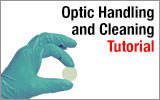
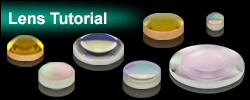
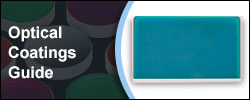
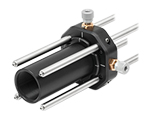
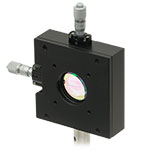
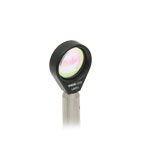

 UV Fused Silica, Uncoated
UV Fused Silica, Uncoated